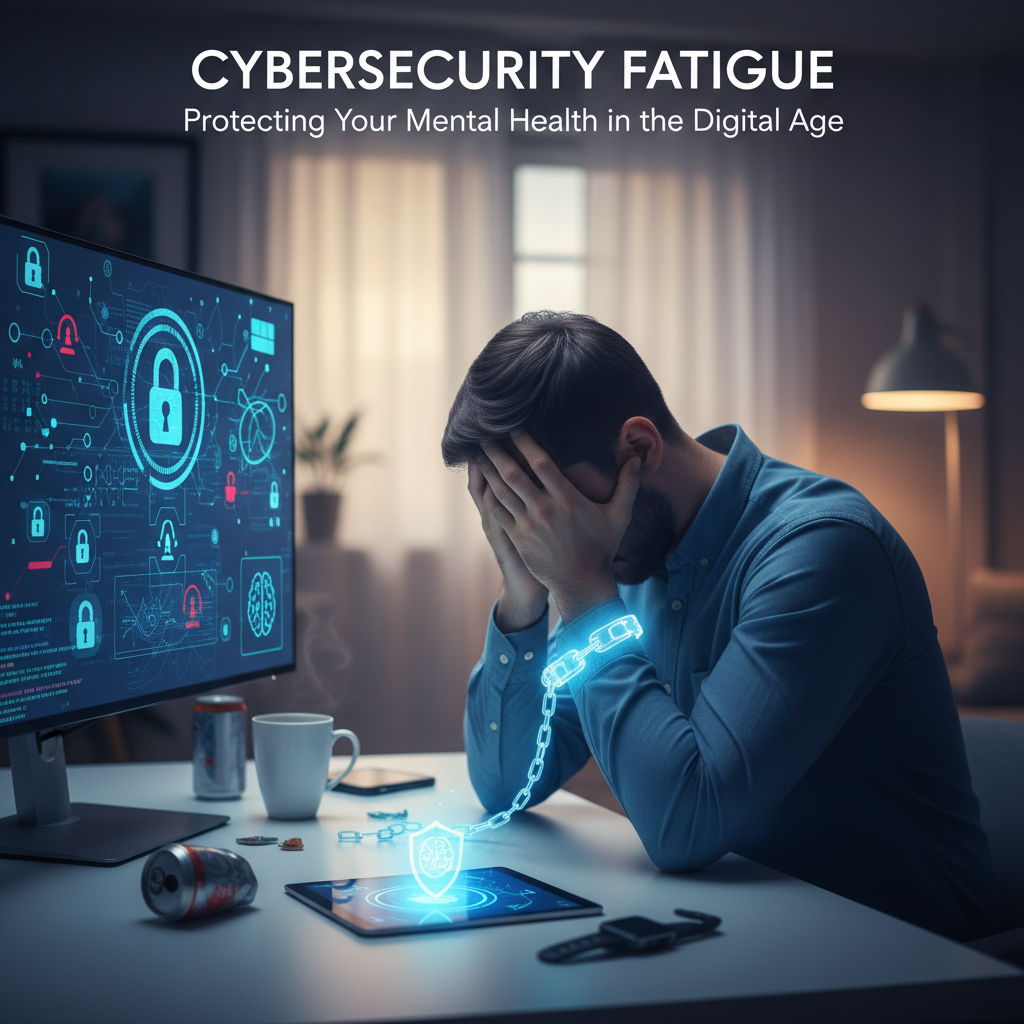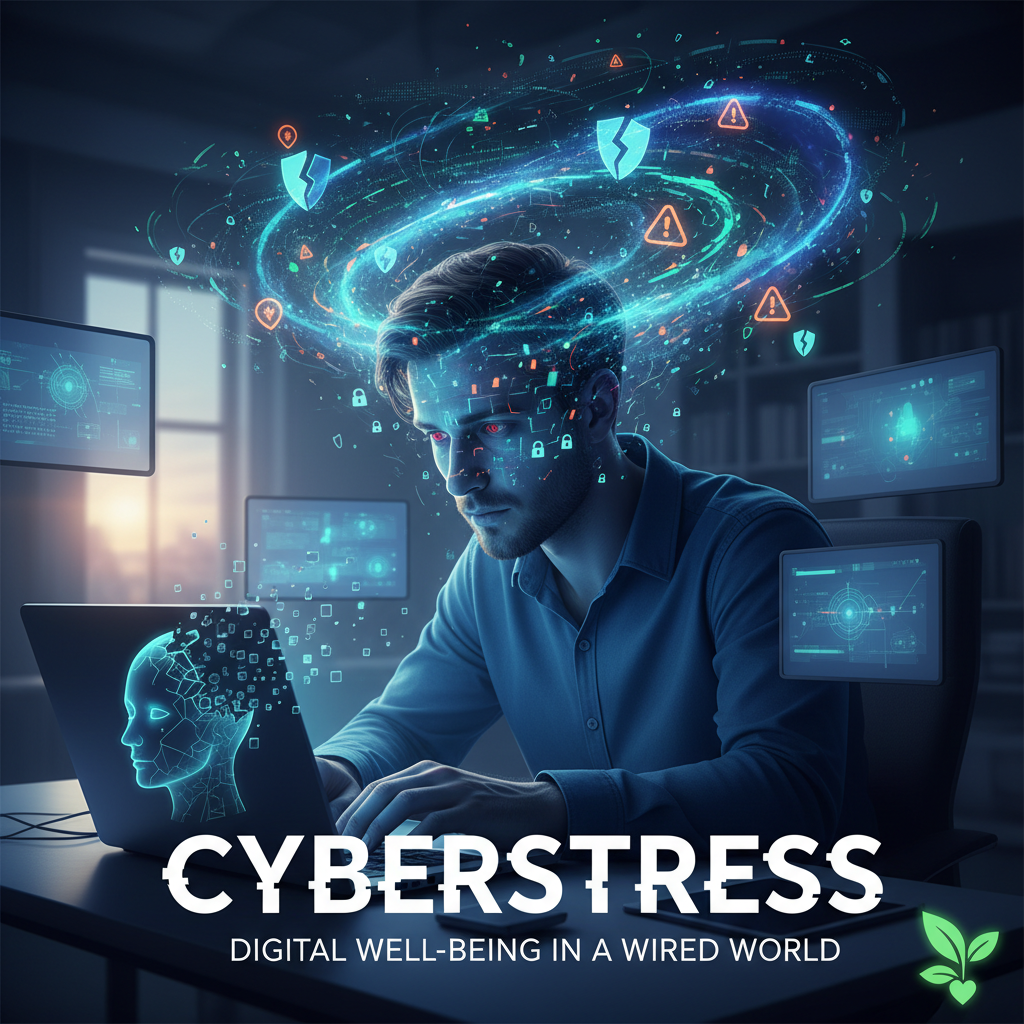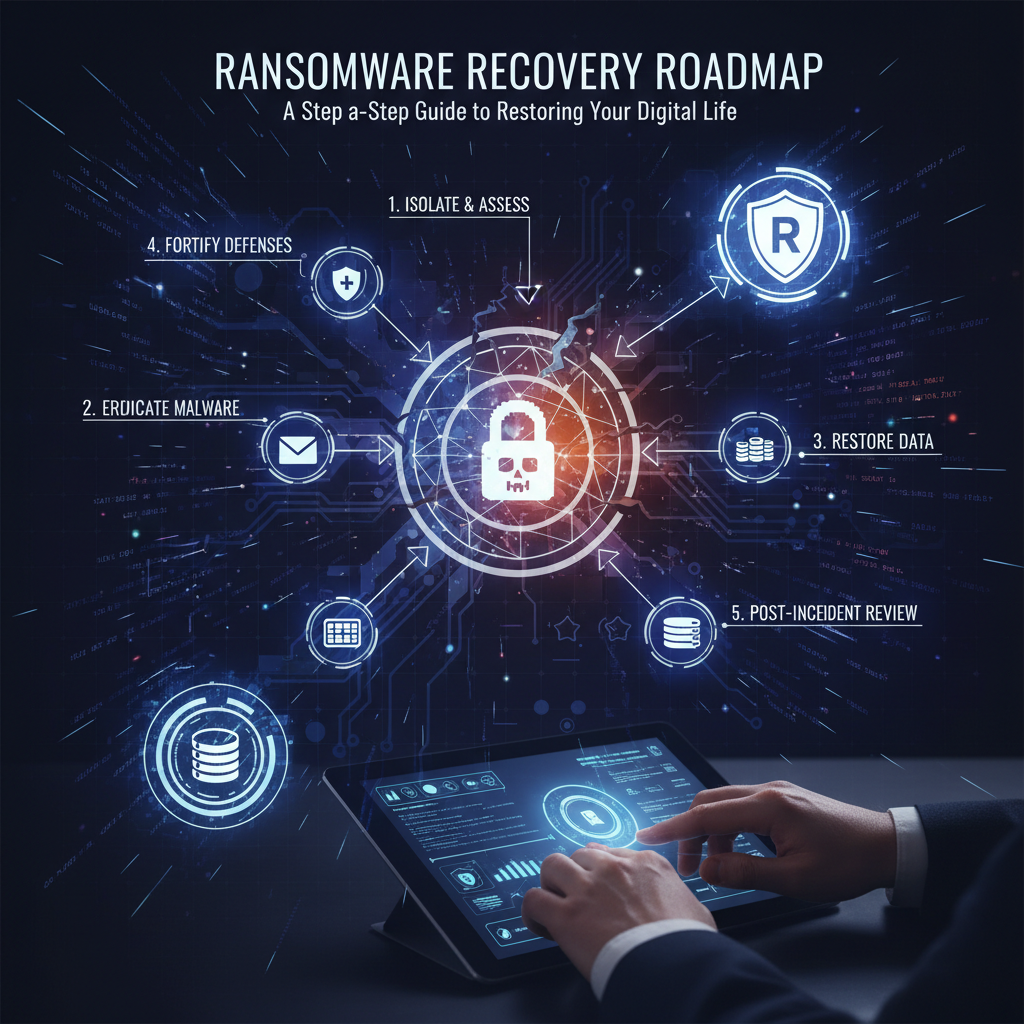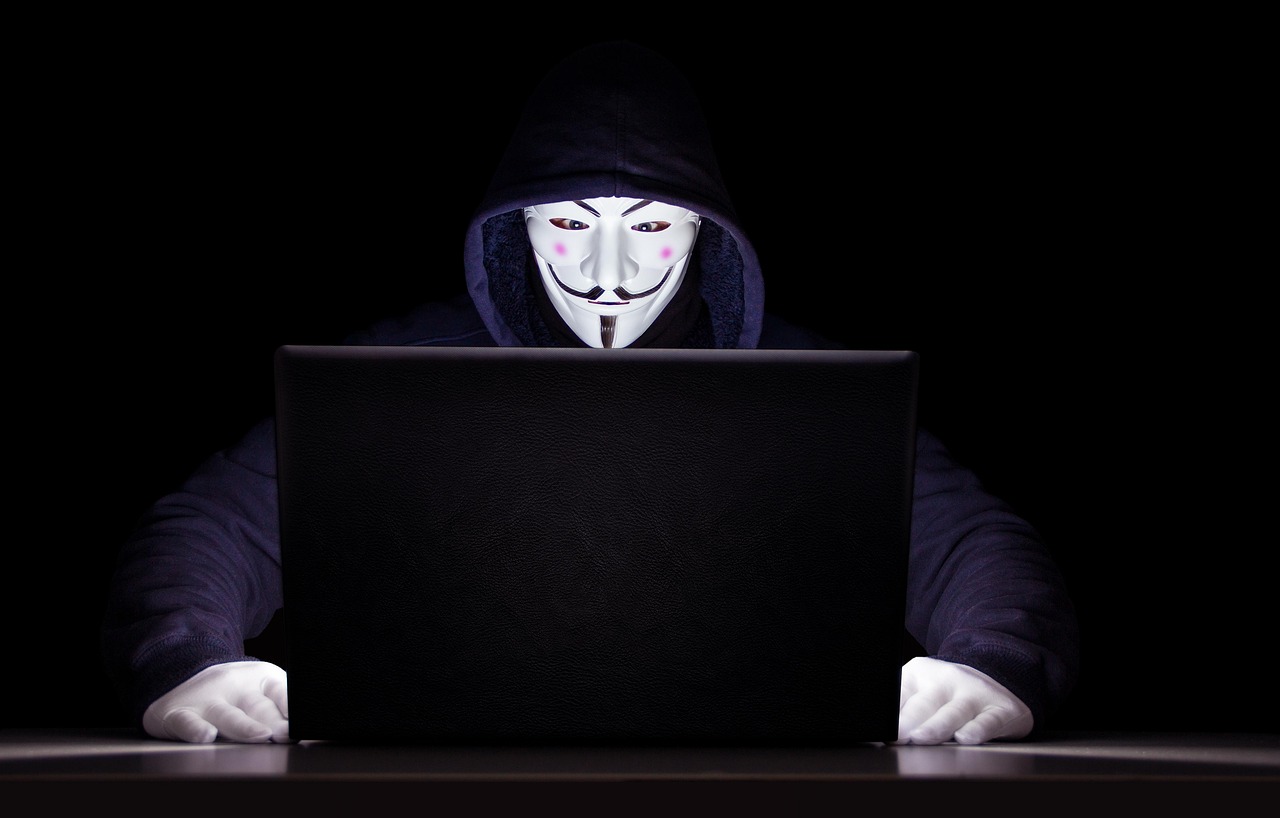Who this is for, what's frustrating you, and how we help
This is for IT leaders, remote workers, cybersecurity pros, and anyone feeling exhausted by non-stop security alerts and password rules. You're juggling threat reports, user training, endless MFA prompts, and still worrying you'll miss the next phishing wave — it's wearing you down, messing with sleep, and making every login feel like a small battle. Our team helps by simplifying security into human-friendly, practical habits and tools (we also help implement them if you don't have time), so you can protect systems and protect your sanity.
What is cybersecurity fatigue?
Cybersecurity fatigue is the mental and emotional exhaustion people feel from constant security demands and threat warnings. It's not just annoyance. It's a persistent drain that reduces attention, slows decision-making, and makes people take shortcuts (like reusing passwords or ignoring alerts). I've noticed it most after big breach headlines — people stop reading training emails, they click faster, they assume someone else will handle it.
Why does cybersecurity fatigue happen?
There's a simple chain reaction: more alerts, more complexity, more rules, more fear. Add remote work, BYOD policies, and 24/7 connectivity, and you've got a recipe for burnout. Security tools often focus on coverage, not cognitive load, so they throw more notifications at users instead of reducing decisions. The result? People tune out. It's kind of like being on a smoke alarm that chirps every night — eventually you stop reacting, even if the risk is real.
How is cyber stress different from general stress?
Cyber stress is stress triggered specifically by digital threats and obligations: fear of getting hacked, overload from alerts, shame after clicking a phishing link, the pressure to stay up-to-date on security. It's more targeted, but it shows up in the same ways as other stress — poor sleep, irritability, decreased productivity. So the coping tactics overlap, but you also need tech-specific fixes. Learn more about digital well-being.
What are the signs of digital overload and declining online well-being?
You might notice a bunch of small changes that add up fast. For example: you avoid opening security messages, you get decision fatigue on simple security choices, or you start delegating security tasks without oversight. I've seen people set 87 passwords on a post-it and call that progress (not progress). Physically, watch for headaches, disrupted sleep, and a sense of dread before logging in.

How does digital overload affect mental health?
Constant alerting keeps your nervous system engaged, which means less capacity for deep work and more anxiety. Over weeks, this increases depressive symptoms and reduces job satisfaction. Look, here's the blunt truth: security systems that require constant vigilance will eventually erode trust in the tools and the team. So the tech isn't the only problem — the workflows and expectations are just as important.
How can you reduce cybersecurity fatigue right now?
There are immediate steps you can take that don't require a huge budget. Some are low-tech, some need leadership changes, but all help reduce cognitive load and improve online well-being.
1) Cut noise by prioritizing alerts
Turn down non-actionable notifications. Set thresholds so only high-confidence threats trigger user-facing alerts. Why? Because if users get 50 warnings a day, they'll click through the 51st without thinking. Our approach is to reduce false positives, route actionable items to one clear channel, and provide one-sentence guidance with each notice. Clear, concise, and calm wins.
2) Make security decisions binary and obvious
People aren't security engineers. So give them simple choices: approve or deny, safe or report, auto-update or remind me later. Use defaults that protect (like automatic updates and password managers). Defaults matter a lot — they're like putting a safety net under a tightrope walker. Most people will take the safer default if it's clear and easy.
3) Use password managers and single sign-on
Password reuse is a huge source of risk and guilt. Password managers solve this and reduce the everyday friction of remembering logins. Single sign-on reduces login steps and centralizes control. Together they cut the number of decisions users must make by a large factor — and that's a direct hit on fatigue.
4) Schedule attention windows and tech-free times
Set explicit times for security tasks and for uninterrupted work. For instance, have a 30-minute morning window for responding to alerts, then a tech-free hour for deep work. I recommend blocking calendars, and leaders should model this behavior (people follow what leaders do, honestly). This reduces the constant partial attention that burns people out.
5) Build empathy into security training
Training should be bite-sized, practical, and scenario-based. Role-play the most common scams, and acknowledge the emotional response when someone falls for a trick. That reduces shame and encourages reporting. From what I've seen, people report more when the culture rewards transparency rather than punishment.
How do you support team members who are already burned out?
Start with a quick assessment: ask open questions about sleep, concentration, and whether they feel equipped to handle threats. Offer immediate relief by reducing alert volume for that person, assigning a buddy for incident reporting, and scheduling a short rest or workload adjustment. Then provide skill-building — short videos, quick simulations, and checklists that rebuild confidence without overload. It works faster than you'd think.

What technical changes reduce cyber stress long term?
Invest in automation for repetitive tasks, layered protections that reduce reliance on user vigilance, and centralized incident handling so front-line users don't carry the entire burden. AI-assisted triage can be helpful, as long as it's tuned to avoid false positives. And yes, having a clear escalation path for real threats is essential — people need to know who to call and what will happen next.
How should leadership change policies to protect online well-being?
Leaders should set realistic policies: fewer mandatory trainings per quarter, real-time support during incidents, and protection from punitive measures when users report mistakes. Create a psychological safety net — people should feel safe to own errors. That's how you turn scary compliance into a learning culture.
When should you seek professional help?
If cyber stress is causing chronic insomnia, panic attacks, or persistent poor performance, it's time for more than workplace fixes. Bring in mental health professionals and a security consultant who can evaluate the tech burden. If you see people avoiding work, making repeated mistakes, or having physical symptoms like heart palpitations, don't wait. I've recommended therapy and workload adjustments to teams before — and it made measurable improvements.
How our team can help without adding more noise
If this feels overwhelming, our team can handle it for you: we audit alert workflows, implement low-friction tools like SSO and managed password solutions, and build human-centered training that people actually complete. We focus on reducing decision load first, then tightening technical controls. No grandstanding, just practical changes that protect systems and safeguard mental health.

Quick action checklist
Want a fast win? Do these three things this week: 1) turn off low-value alerts, 2) push a password manager to users, 3) declare a daily 60-minute no-notification block for focused work. Doable. Immediate relief. You'll see attention and morale improve in days, not months.
Final thoughts
Cybersecurity fatigue is real, costly, and solvable. It's not about making people tougher, it's about making systems smarter and kinder. If you build security with human limits in mind, you protect both data and people. And that's the kind of resilient security that lasts.
Frequently Asked Questions
What immediate signs suggest someone is experiencing cyber stress?
Look for avoidance of security messages, frequent mistakes like clicking suspicious links, reduced interaction in team security drills, and physical symptoms such as headaches and sleep disruption. If someone also expresses shame or fear about admitting mistakes, that's another red flag.
Can technology alone solve cybersecurity fatigue?
No. Technology helps, but only when paired with policy, culture, and workflow changes. Automating tedious tasks, reducing alerts, and enabling safer defaults are technical moves. But you also need empathetic training, leadership modeling, and clear escalation paths to truly reduce fatigue.
How long does it take to see improvement after making changes?
You can see measurable relief in days after reducing alert noise and introducing a password manager. Cultural shifts and habit changes take longer, often 3 to 12 weeks, depending on team size and leadership support. Small wins early keep momentum going.
Are there specific tools that lower digital overload best?
Password managers, single sign-on, automated patching, and AI-tuned alert triage tools are high impact. But the best tool is the one configured to reduce decisions for your people. Off-the-shelf tools need careful tuning to avoid creating more noise.
What if my organization punishes mistakes — how do we change that?
Start by creating a non-punitive reporting policy, celebrate reports that prevent harm, and train managers to respond with coaching not reprimand. Leaders must model transparency; when a leader admits a mistake and explains how it was fixed, others follow. It's slow, but it works.


